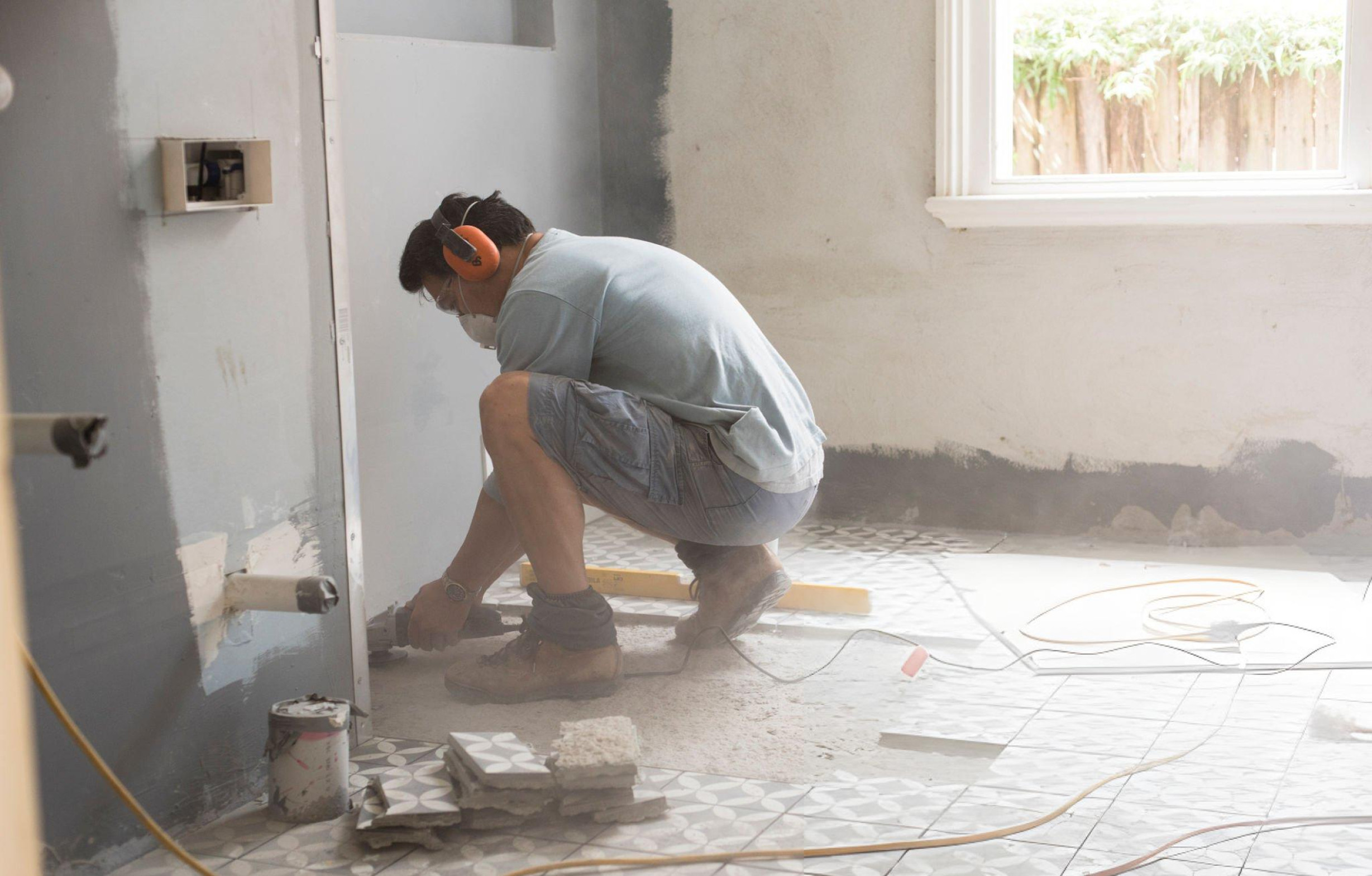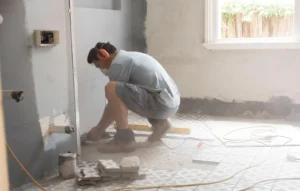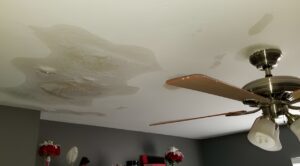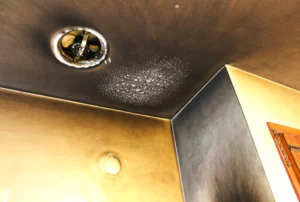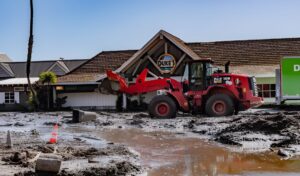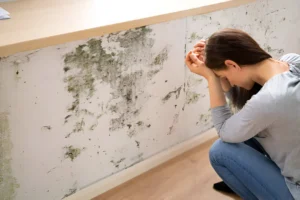When disaster strikes your home through water damage, fire, or mold growth, homeowners face a critical decision: attempt restoration yourself or hire professional services. While DIY restoration might seem like an obvious money saver, the reality involves hidden costs, safety risks, and potential for incomplete repairs that could cost significantly more in the long run.
Table of Contents
Understanding the True Cost of DIY Restoration
Water Damage DIY Costs
DIY water damage restoration requires substantial upfront investment in equipment and supplies. For a typical small job, homeowners can expect to spend between $600 and $3,100 on essential items including water extraction equipment ($100-$500), dehumidifiers and fans ($150-$400), cleaning supplies ($50-$200), and replacement materials ($300-$2,000).
However, these costs represent only the visible expenses. The hidden costs of DIY water restoration include potential mold growth from incomplete drying, structural damage from improper assessment, and the significant time investment required for thorough restoration.
Fire and Smoke Damage DIY Costs
Fire damage restoration presents even greater challenges for DIY attempts. Initial costs range from $375 for minor smoke cleanup to over $2,550 for more extensive damage. This includes cleaning supplies and PPE ($50-$150), removal tools ($25-$100), repair materials ($200-$2,000), and safety equipment ($100-$300).
The complexity of fire damage extends beyond visible burn marks. Smoke penetration into HVAC systems, wall cavities, and structural materials requires specialized knowledge and equipment that DIY methods typically cannot address effectively.
Mold Remediation DIY Costs
DIY mold remediation appears most affordable initially, with costs ranging from $355 to $2,100 for small areas. This includes cleaning products ($30-$100), PPE and safety gear ($50-$200), tools and equipment ($75-$300), and replacement materials ($200-$1,500).
However, mold remediation carries significant health risks when performed incorrectly, and incomplete removal often leads to regrowth requiring professional intervention.
Professional Restoration Pricing
Water Damage Professional Costs
Professional water damage restoration typically costs between $1,382 and $6,357, with an average of $3,842. Pricing varies by water category: clean water restoration costs $3.50 per square foot, gray water $5.25 per square foot, and black water $7.50 per square foot.
Professional services include comprehensive assessment, water extraction, structural drying, dehumidification, sanitization, and restoration of damaged materials. The investment covers specialized equipment, trained technicians, and warranty protection.
Fire Damage Professional Costs
Professional fire damage restoration ranges from $3,000 for minor single-room damage to over $100,000 for severe extensive damage. The national average cost is $20,470, with typical ranges between $2,900 and $38,325.
Professional fire restoration addresses visible damage, hidden smoke penetration, structural integrity issues, and complete odor elimination using advanced techniques like ozone treatments and thermal fogging.
Mold Remediation Professional Costs
Professional mold remediation costs typically range from $1,200 to $3,750, averaging $2,300 for most homeowners. Pricing varies by affected area: small areas under 100 square feet cost $500-$1,500, medium areas (100-1,000 square feet) cost $1,500-$3,000, and large areas over 1,000 square feet can exceed $10,000.
Critical Risk Analysis: Why DIY Often Costs More
Health and Safety Hazards
DIY restoration exposes homeowners to serious health risks including respiratory problems from mold spores, chemical exposure from fire damage, and contamination from black water. Professional restoration teams use proper safety equipment and follow established protocols to minimize these risks.
Incomplete Restoration Leading to Future Problems
The most significant hidden cost of DIY restoration is incomplete remediation. Water damage that appears resolved can lead to mold growth within 24-48 hours if moisture remains trapped in building materials. Fire damage DIY attempts often fail to address smoke penetration in HVAC systems and wall cavities, leading to persistent odors and potential health issues.
Mold remediation is particularly risky for DIY attempts, as improper containment can spread spores throughout the property, potentially affecting areas that were previously uncontaminated. Professional remediation includes proper containment, HEPA filtration, and post-remediation testing to ensure complete elimination.
Insurance Complications
Many insurance policies require professional restoration services for coverage approval. DIY attempts may void insurance coverage or result in claim denials, leaving homeowners responsible for the full cost of restoration plus any additional damage caused by inadequate repairs.
Structural Integrity Issues
DIY restoration often fails to identify structural damage that poses safety risks. Fire damage can compromise electrical systems and structural integrity in ways that aren’t immediately visible to untrained individuals. Water damage can weaken foundations and framing if not properly assessed and addressed.
When DIY Makes Sense (Limited Scenarios)
DIY restoration is only appropriate for very minor damage scenarios: small water spills from clean sources affecting less than 10 square feet, minor smoke damage limited to surface cleaning, or small surface mold growth under 10 square feet.
Even in these limited cases, homeowners must have proper safety equipment, follow established protocols, and monitor for signs of recurring problems.
The Professional Advantage: Long-Term Value
Comprehensive Assessment and Documentation
Professional restoration companies provide thorough damage assessment using moisture meters, thermal imaging, and other specialized tools to identify hidden damage. This comprehensive approach ensures all affected areas are addressed, preventing future problems and providing proper documentation for insurance claims.
Specialized Equipment and Techniques
Professional restoration utilizes industrial grade equipment including commercial dehumidifiers, air movers, HEPA filtration systems, and specialized cleaning agents not available to consumers. These tools achieve faster, more thorough restoration than consumer-grade equipment.
Warranty and Quality Assurance
Professional restoration services typically include warranties on their work and follow industry standards like IICRC certification. This provides homeowners with recourse if problems develop and assurance that the work meets professional standards.
Time and Stress Reduction
Professional restoration significantly reduces the time required for restoration and eliminates the stress of managing complex restoration projects. This allows homeowners to focus on other priorities while ensuring proper restoration of their property.
Making the Right Decision for Your Situation
The decision between DIY and professional restoration should consider the extent of damage, your available time and expertise, health and safety risks, insurance requirements, and long-term cost implications. While professional restoration requires a higher upfront investment, it typically provides better value through comprehensive remediation, warranty protection, and prevention of future problems.
For most restoration scenarios involving significant damage, professional services offer superior results and long-term value compared to DIY attempts. The initial cost savings of DIY restoration are often offset by incomplete repairs, safety risks, and potential insurance complications that can result in much higher total costs.
When facing restoration decisions, consider consulting with professional restoration companies for assessment and estimates. Many companies provide free evaluations that can help you understand the full scope of damage and make an informed decision about the best restoration approach for your specific situation.

